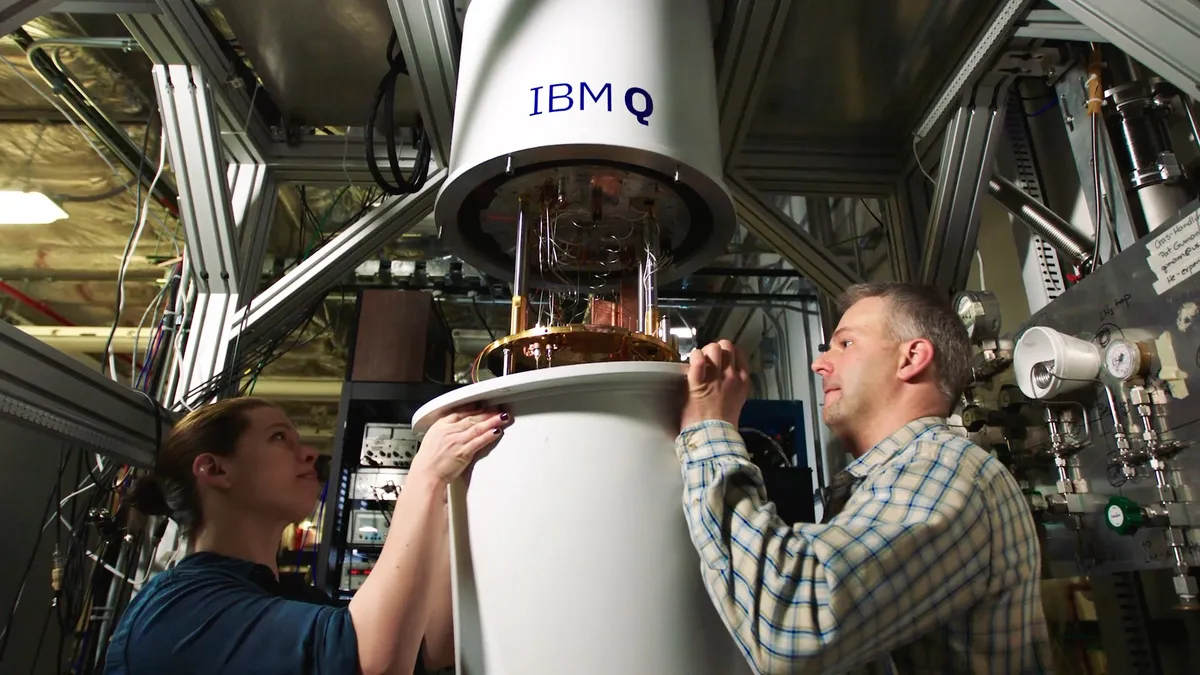Dive Brief:
-
The enterprise has yet to see a true quantum computer, but IBM is leading the way. Before the end of 2017, clients will have access to a 20 qubit processor, the first IBM Q system open for client access online, according to a company announcement. The system offers a 90 microsecond coherence window, the amount of time during which a quantum computation can be made.
-
IBM began launching publicly available quantum computing systems in May 2016, and the 20 qubit system will be the fourth generation of development, superseding the 5 and 16 qubit systems already in place. The company built a functioning prototype of a 50 qubit processor and plans to release the technology in next generation systems, according to the announcement.
- IBM's announcement comes amid rumors that Google is developing a 49 qubit machine and already has a 22 qubit processor, according to the MIT Technology Review. IBM's 50 qubits may be a record, but the enterprise still has a ways to go and will require far more than 49 qubits — potentially millions — for a quantum computer to be effective.
Dive Insight:
IBM Q is an important platform for quantum development both because it is a leader and because it is open to the public for experimentation. The exposure to developers, other experts and now clients will help IBM track use cases of quantum technology over time, data it can use to tailor its commercial offering.
Whoever hits fully realized quantum computing first will be at a major competitive advantage and, if state actors are at play, a major security advantage. But right now companies are still working on lengthening coherence times and increasing qubits on a given processor.
In addition to its quantum platforms, IBM has positioned itself well for technologies set to expand in the enterprise in coming years. General consensus has IBM leading the blockchain race, and its Watson IoT platform has no shortage of big name clients.













